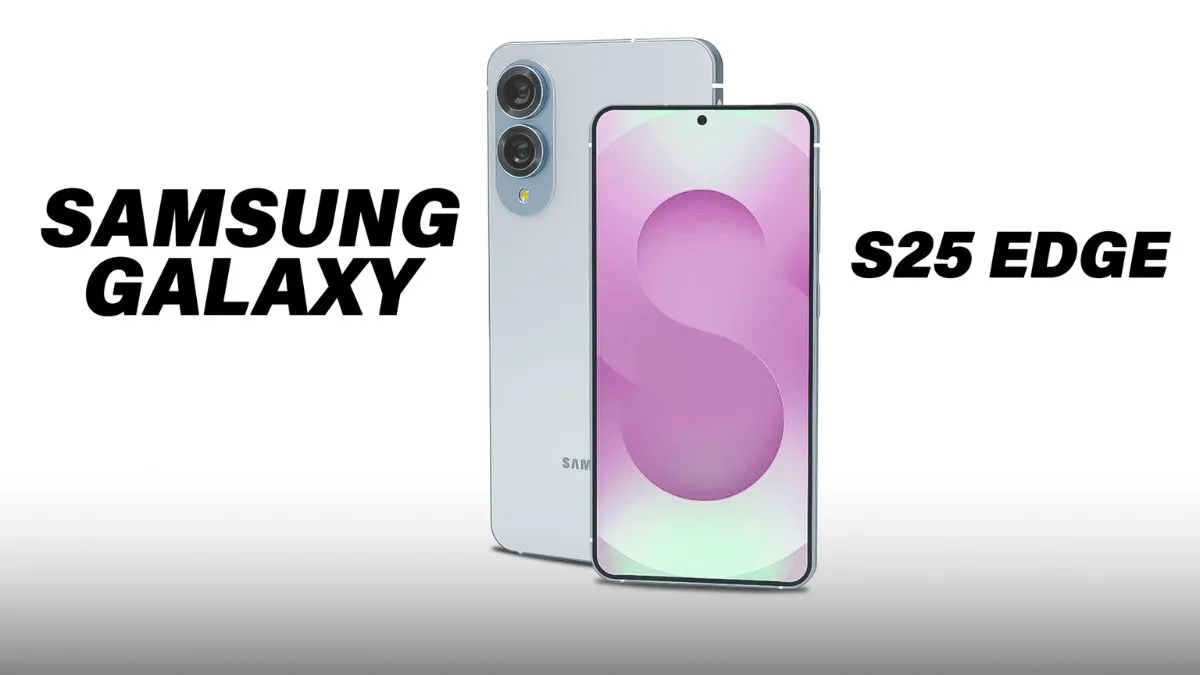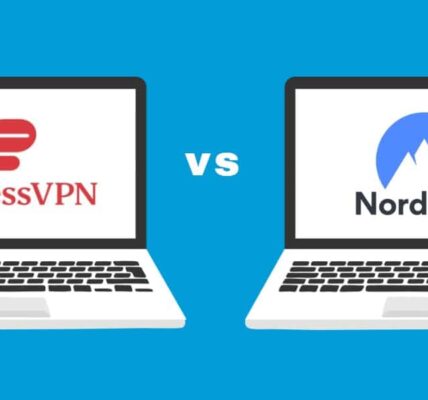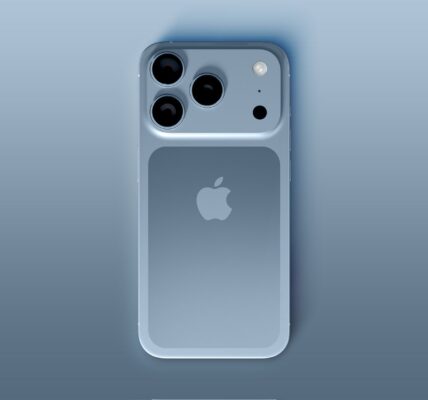 Samsung’s Galaxy S25 series has introduced two standout models: the ultra-slim Galaxy S25 Edge and the feature-rich Galaxy S25 Ultra. While both devices boast impressive specifications, their camera systems cater to different user needs. This article delves into the five key differences between the Galaxy S25 Edge and Ultra cameras, helping you decide which suits your photography preferences.
Samsung’s Galaxy S25 series has introduced two standout models: the ultra-slim Galaxy S25 Edge and the feature-rich Galaxy S25 Ultra. While both devices boast impressive specifications, their camera systems cater to different user needs. This article delves into the five key differences between the Galaxy S25 Edge and Ultra cameras, helping you decide which suits your photography preferences.
But here’s the real question: Which one should you pick if you’re obsessed with capturing the perfect shot—whether it’s a neon-lit street market in Manila, a sun-drenched savannah in Kenya, or a buzzing football game in Rio?
Let me take you back to last month.
I was in Ho Chi Minh City, attending a street food night tour. The city was alive motorbikes whizzing past, locals grilling skewers under strings of hanging bulbs. I had both the Galaxy S25 Edge and S25 Ultra in my backpack, ready to put their camera systems to the ultimate real-world test.
As someone who’s blogged about mobile technology for over a decade, I’ve reviewed dozens of flagships. And believe me, the camera setup on a phone today isn’t just a spec, it’s your creative toolkit. Whether you’re snapping portraits for your Insta feed, vlogging your daily grind, or zooming into distant wildlife, the right camera makes all the difference.
So, if you’re sitting on the fence, wondering if the thinner, trendier Edge is good enough—or if the Ultra’s beastly hardware is truly worth the extra buck—you’re in the right place.
Let’s break it all down. 📸👇
Design and Build
The Galaxy S25 Edge is celebrated for its sleek design, measuring just 5.84mm in thickness and weighing approximately 162 grams. Its ultra-thin profile is achieved by omitting certain components, such as the periscope lens, to maintain its slimness. In contrast, the Galaxy S25 Ultra is more robust, featuring a thicker build to accommodate its advanced camera system, including multiple lenses and larger sensors.
Display Features
Both models offer stunning displays, but with slight variations. The S25 Edge sports a 6.7-inch OLED display with a resolution of 2400 x 1080 pixels, providing vibrant visuals. The S25 Ultra, however, boasts a larger 6.9-inch Dynamic LTPO AMOLED display with a higher resolution of 3120 x 1440 pixels, delivering sharper images and better color accuracy.
Camera Specifications
-
Main Camera Sensor: Both devices feature a 200MP main camera sensor, ensuring high-resolution photos.
-
Ultra-Wide and Telephoto Lenses: The S25 Edge includes a 12MP ultra-wide lens but lacks a telephoto lens. The S25 Ultra, on the other hand, is equipped with a 50MP ultra-wide lens, a 10MP 3x telephoto lens, and a 50MP 5x periscope telephoto lens, offering greater versatility in photography.
The absence of a telephoto lens in the S25 Edge limits its zoom capabilities to digital zoom, which can result in loss of image quality at higher magnifications. Conversely, the S25 Ultra’s dedicated telephoto and periscope lenses provide optical zoom options, allowing for clearer and more detailed images when zooming in on subjects.
Front Camera Performance
Let’s face it—the front camera matters more than ever. Whether you’re taking selfies, joining Zoom meetings, or filming short reels, that little lens on the front of your phone is your direct link to the world.
Both the Galaxy S25 Edge and Galaxy S25 Ultra pack a 12MP front-facing camera capable of shooting crisp 4K videos at 60 frames per second. That’s stellar for smooth, high-resolution vlogs or detailed video calls with friends, family, or clients. But here’s where things start to separate a bit.
While the Edge delivers great results, the Ultra takes it a step further, leveraging enhanced image processing through its upgraded chipset and AI. This means better facial recognition, more realistic skin tones, dynamic lighting adjustments in real time, and even background blur effects that mimic a DSLR-like bokeh. It’s like having a pocket-sized director curating your every selfie.
If you’re a content creator, influencer, or just someone who wants their front camera to work magic even under bad lighting, the S25 Ultra is a noticeable step up.
Battery and Charging
Here’s something every power user in Lagos, Jakarta, or São Paulo will appreciate: battery life you can trust.
The Galaxy S25 Edge offers a decent 3,900mAh battery, which comfortably gets you through a day of moderate use—think texting, scrolling TikTok, streaming a few YouTube videos, and snapping some photos. It supports 25W wired charging, which gets you from 0 to about 50% in 30 minutes, and 15W wireless charging, perfect for overnight recharges on your bedside stand.
But the S25 Ultra flexes harder here, with a whopping 5,000mAh battery. That means more gaming, more camera use, and more streaming without hunting for a charger midday. Even better, it supports 45W wired charging—so you can go from nearly dead to about 70% in under 30 minutes. Wireless charging remains the same at 15W, and both phones support reverse wireless charging if you want to top off your Galaxy Buds or a friend’s phone.
For those on the move or who can’t afford to babysit their battery, the Ultra is the heavyweight champion.
Software and AI Enhancements
The brains behind the lens matter just as much as the hardware.
Running on Android 15 with Samsung’s polished One UI 7, both phones are loaded with AI-driven camera tools designed to make your photography smarter, not harder. This includes Scene Optimizer (which auto-adjusts settings based on what you’re shooting), Night Mode, Super Steady video, Auto-Framing, and Photo Remaster to clean up your shots after you take them.
However, the Galaxy S25 Ultra adds more muscle to the mix. With a beefier processor and more RAM, it handles AI-based enhancements with better precision. Think faster subject tracking, smart HDR, adaptive frame rate switching for video recording, and multi-frame fusion to pull in the best elements from multiple photos and merge them into one perfect shot.
Whether you’re snapping a fast-moving scene in a crowded Bangkok street or a serene night sky in Nairobi, the Ultra’s software intelligence helps you nail the shot.
Video Recording Capabilities
Content is king, and if you’re a YouTuber, TikToker, or mobile filmmaker, your phone is your primary tool.
The Galaxy S25 Edge doesn’t disappoint. It shoots 8K video at 30fps and 4K at 60fps, which is more than enough for most users. Videos are vibrant, smooth, and detailed—especially under good lighting. It’s a fantastic setup for casual vloggers and daily use.
That said, the Galaxy S25 Ultra is clearly built for creators. Not only does it support 8K recording at higher frame rates, but it also brings in improved video stabilization (thanks to Super Steady 3.0), Director’s View (for switching between lenses mid-shot), and even HDR10+ support for cinema-grade dynamic range.
This means whether you’re capturing fast-paced action like capoeira dancers in Brazil or a calm seaside scene in Bali, your footage will look professional-grade—straight from your pocket.
Low-Light Performance
Night photography has long been a challenge, but Samsung is narrowing the gap between smartphones and DSLRs.
The S25 Edge does a commendable job in dim lighting. Its Night Mode uses software to brighten up dark scenes, reduce noise, and preserve color. For most people, it’ll produce perfectly shareable shots of that late-night dinner or skyline view.
But the S25 Ultra truly shines in the dark. Literally.
Thanks to its larger camera sensors and next-gen image signal processing, the Ultra pulls in more light even in pitch-black scenarios. It uses multi-frame noise reduction, AI sharpening, and even laser autofocus to produce photos that are clearer, brighter, and way more detailed.
Whether you’re capturing the vibrant nightlife of Manila or a moonlit safari in Kenya, you’ll be stunned by how much detail the Ultra brings out.
Price and Value
The Galaxy S25 Edge is expected to be priced between $1,100 and $1,300, offering a balance between performance and design. The S25 Ultra, with its comprehensive feature set, commands a higher price point, reflecting its advanced capabilities.
Target Audience
-
Galaxy S25 Edge: Ideal for users seeking a sleek, lightweight device with a powerful main camera for everyday photography.
-
Galaxy S25 Ultra: Suited for photography enthusiasts and professionals requiring versatile camera options and superior performance in various shooting conditions.
Pros and Cons
-
Galaxy S25 Edge:
-
Pros: Slim design, high-resolution main camera, affordable price.
-
Cons: Limited zoom capabilities, smaller battery.
-
-
Galaxy S25 Ultra:
-
Pros: Versatile camera system, superior zoom, excellent low-light performance.
-
Cons: Bulkier design, higher cost.
-
Final Verdict
Choosing between the Galaxy S25 Edge and Ultra depends on your photography needs and preferences. If you prioritize a slim design and high-resolution main camera for casual photography, the S25 Edge is a suitable choice. However, if you require a comprehensive camera system with advanced features for professional-grade photography, the S25 Ultra stands out as the superior option.
Read Also Samsung Galaxy S25 Edge: Latest News, Leaks, and Everything You Need to Know in 2025
-
Does the Galaxy S25 Edge have a telephoto lens?
-
No, the S25 Edge lacks a telephoto lens, relying solely on digital zoom.
-
-
Can both models record 8K videos?
-
Yes, both the S25 Edge and Ultra support 8K video recording, with the Ultra offering higher frame rates and better stabilization.
-
-
Is the front camera the same on both devices?
-
Yes, both feature a 12MP front-facing camera capable of 4K video recording at 60fps.
-
-
Which model is better for low-light photography?
-
The S25 Ultra performs better in low-light conditions due to its larger sensor and advanced image processing.
-
-
Are there differences in battery life between the two models?
-
Yes, the S25 Ultra has a larger 5,000mAh battery compared to the S25 Edge’s 3,900mAh, resulting in longer battery life.
-
For more detailed specifications and comparisons, visit Samsung’s official comparison page.




